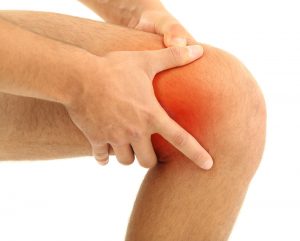The idea of using physiotherapy and other methods for treatment of CRPS is to try and relieve at least some of the signs and symptoms that are caused by the condition. This involves both Physiotherapy and Occupational Therapy.
Physiotherapy in conjunction with Occupational Therapy (OT), especially in the early stages of the condition, plays an important role in functional restoration of the CRPS limb (Singh, M et al. 2015). It is also suggested by the professionals that physio is used together with other treatments given to patients with CRPS, such as medication, alternative RSD treatments, implanted devices (Daly, A.E. & Bialocerkowski, A.E. 2008).
- MOVEMENT of the limb affected by CRPS can try to be restored by using muscle strengthening exercises, gentle movement and some exercises for the whole of the body – Learning to cope with the condition in your life (For more information on coping strategies, visit our '10 Tips on Living with CRPS' page). When you first go to physiotherapy, ask them if they have had any experience of people with CRPS because this will make a difference as to how they approach things with you.
- The Occupational Therapist (OT) could help give you tips and to learn different ways to do everyday things and activities, including by pacing your daily activities over the whole day, so you do not become as tired.
- DESENSITISATION TECHNIQUES – Most CRPS patients who have been to physiotherapists will have been told about desensitisation and how important it is. This is done by using different textures to gently rub at the beginning on your CRPS affected limb. This could be using a tissue, feather, cotton, etc. Then as you gradually are able to tolerate the textures try and rub slightly harder until you can tolerate the different textures and therefore reduce the pain that you feel. (See below for more information on desensitisation).
- EXERCISE – Don't try and do exercise without a physio or an OT because you will need to be shown which exercises are good for you and your affected limb. They can also offer support and encouragement.
- AQUA (WATER) THERAPY – If you are able to tolerate water then this is a good form of therapy so that you become weightless in the water, thereby enabling you to do exercises that would ordinarily be difficult outside of the water. There is also the possibility of using a hydrotherapy pool where the water is a lot warmer than a usual pool and can help with the problem of being sensitive to temperature changes.
- TENS THERAPY – This is a small device with small stickable pads that you can use outside of your body to give you a form of stimulation to try and reduce the pain you are feeling. The idea is to cut through the pain signal from your brain to your limb affected by CRPS.
- PAIN EXPOSURE PHYSICAL THERAPY (PEPT) – PEPT is a patient-centred physical therapy, also know as the "Macedonian method", which was developed by Ms. Shinka in 2003. It is based on the supposition that limited use or non-use of an extremity or limb, whether or not caused by fear of movement or pain, can lead to disease deterioration. PEPT is tailored towards improving activities in daily life, using progressive-loading exercises, desensitisation and 'self-forced' use, in which patients have to encourage themselves to use their affected extremity, both during CRPS treatment exercises and in daily activities, without the use of medication (Raymakers, L. 2015). A recent study undertaken by Barnhoorn, K.J. et al. (2015) found that the patients having PEPT showed a greater improvement in AROM but more research is needed.
- Kinesio Taping – Kinesio Taping method has been looked at for CRPS. The RSDSA have produced a Q&A about Kinesio Taping method for CRPS by Andrea Wolkenberg, PT, MA, CKTI.
- GRADED MOTOR IMAGERY – Graded Motor imagery or GMI is a non-invasive therapy for Complex Regional Pain Syndrome. Visit our complete guide to GMI article to learn about how Graded Motor Imagery can help your CRPS.
- MIRROR THERAPY – Mirror Therapy or Mirror Visual Feedback therapy is consider by some researchers such as Breivik, H. et al. (2013) a good tool to use in conjunction with other therapies for CRPS sufferers. Brevik, H. et al. (2013) stated that: "It is not the mirror, it is more the context in which it is used, that has effect. Focus on information and motivation, dosing, and compliance is essential." See also, Anandkumar, S. & Manivasagm, M. (2014).
Following a recent review (Smart, K.M. et al 2016) on physiotherapy for pain and disability for adult patients with CRPS, the authors found that mirror therapy and Graded Motor Imagery or GMI gave meaningful improvements in pain and function for those people suffering with CRPS I.
How To Use Desensitisation Techniques
Using desensitisation techniques as part of your persistent p;pain or CRPS management routine is something that doctors, pain specialists and physios like you to try, especially in the early stages of your diagnosis and CRPS treatment. Desensitisation is also something that doesn’t involve medication, so it is non-invasive and is an alternative therapy. You can use these techniques as a self management tool.

What Is Desensitisation?
According to Physio-Pedia, in their article on desensitisation, they describe it as: "Desensitization is a treatment technique used to modify how sensitive an area is to particular stimuli. This technique is utilized to decrease, or normalize, the body’s response to particular sensations."
Aims of Desensitisation
In this article, it goes through how to use desensitisation as part of your chronic pain management regime. It is a technique that it is used to help reduce the hypersensitivity (allodynia) that you are feeling as a result of the Complex Regional Pain Syndrome.
The idea of desensitisation is that it gives you regular, short lengths of time, slow increase of stimulating your nerves in your CRPS affected area. You use the technique every day, but only for short lengths of time in any one session, so you don’t need to use desensitisation for hours on end.
In a CRPS research study, Lewis, J.S. et al (2011) stated that: "Patients are highly protective of the painful region and hypervigilant to any potential threats to their affected limb."
It is because CRPS sufferers don't use and touch their affected limbs that doctors and researchers believe that by doing the desensitisation exercises it will reduce the pain that is felt (Harden 2001).
Lewis, J.S. et al (2007) said of other research that had been done concerning CRPS sufferers not touching their limbs that: "In spite of pain in the CRPS limb, clinical observations show patients pay little attention to, and fail to care for, their affected limb as if it were not part of their body. Literature describes this phenomenon in terms of neurological neglect-like symptoms."
In the same research study, Lewis, J.S. et al. (2007) stated what they actually believe is that: "…body perception disturbance is a more appropriate term than ‘neglect-like’ symptoms to describe this phenomenon."
The RCP Guidelines for CRPS (2018) give some good advice as to how you should do the desensitisation techniques. To start off with they recommend that: "Where possible, feel the sensation on a part of your body not affected by CRPS first, and remember how that normal sensation felt when then applying to the affected area."
Practising Desensitisation

- Gather together some different textured materials, something warm and cool, e.g. cotton, silk handkerchief, soft brush, wool, velvet, feathers
- Now get yourself in a comfortable position
- Begin by stroking an unaffected area or even your other limb or extremity with one of the soft pieces of material you have, e.g. velvet or piece of silk
- Remember the feeling you felt with that material on your unaffected area
- Now, begin to slowly stroke further towards your CRPS affected area
- As you are stroking towards your CRPS area, keep remembering how it felt on your unaffected area where you didn’t feel pain, it was something that didn’t hurt and instead it was pleasant
- Keep thinking about your unaffected area while touching towards your CRPS area and go further towards still thinking pleasant feelings
- You will feel pain most likely and not comfortable at first and this is perfectly normal to feel that, but do stick with it
- After a few minutes stop and then go onto a rougher textured material and begin the whole process again starting with your unaffected area
- The aim of this is to hopefully, in the future, reduce your hypersensitivity in your CRPS-affected area
- Once you start to move towards your CRPS affected area after time
These desensitisation techniques won’t stop your hypersensitivity overnight. It is a practice that you need to keep at until you can begin to tolerate different materials. Desensitisation techniques won’t work for everybody as we are all individuals with different pain thresholds, signs and symptoms of Complex Regional Pain Syndrome (CRPS). Hopefully, you will now understand not only about desensitisation techniques for your CRPS, but also how to use them as part of your self-management care routine.
TO THE TOP
LET’S SPREAD AWARENESS OF CRPS!





 £
£